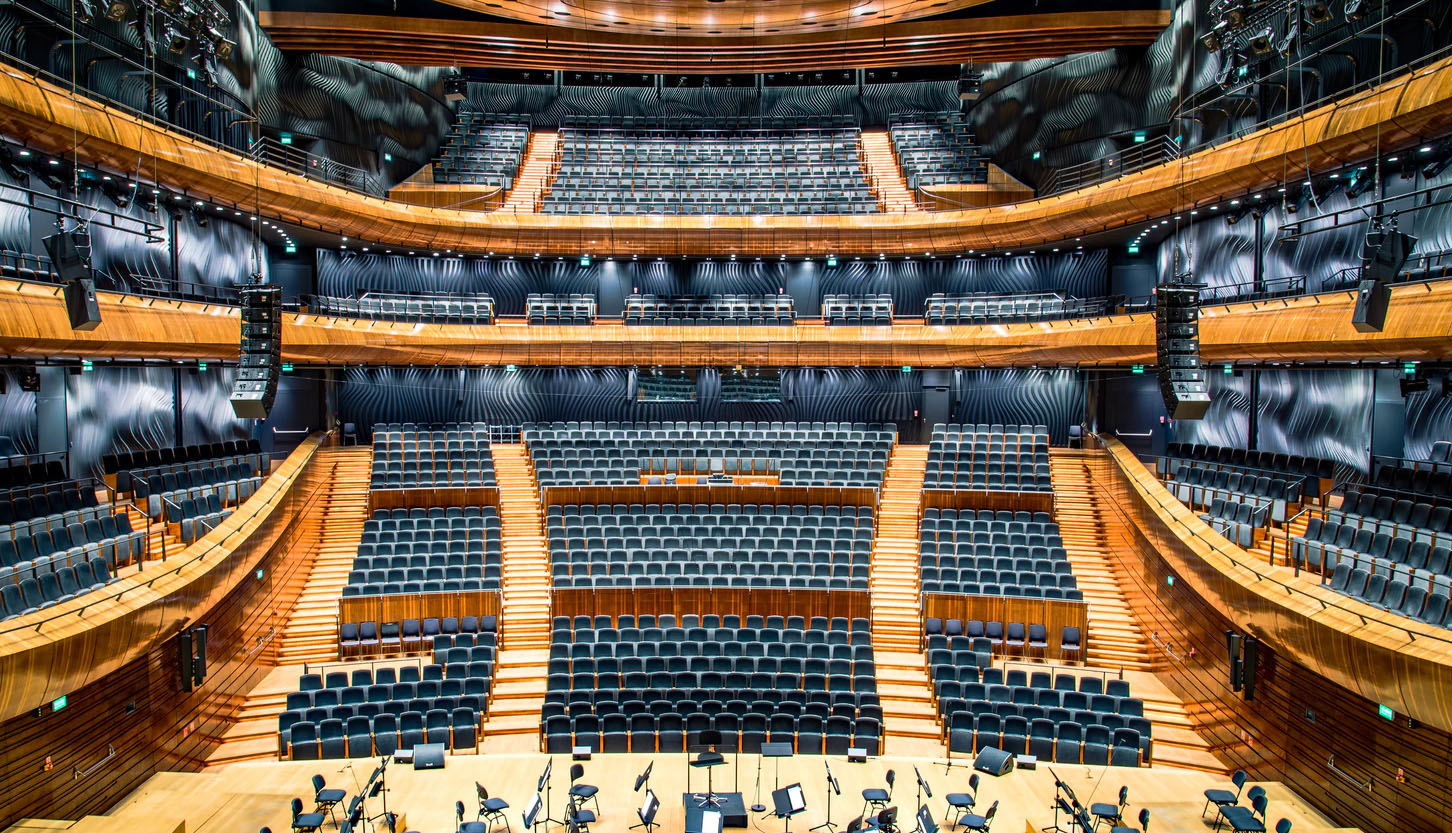As audio engineers, we’re constantly presented with choices that involve compromise and give and take. Many of these are budgetary and/or based on realities of what’s available or possible for a given application.
Tradeoff, TANSTAAFL and triage are underlying principles to my decision-making process in the design and optimization of sound systems. The concept of the tradeoff is simple: give up something to get something.
TANSTAAFL is an acronym created by sci-fi writer Robert Heinlein: “There ain’t no such thing as a free lunch.” You face TANSTAAFL every time you get that email from “Mr. Smith” who is ready to give you part of his $20,000,000 fortune with your help and access to your bank account.
Triage is a resource prioritization method for situations where there is not an infinite supply to solve all problems. The obvious example is a hospital’s blood bank in a mass casualty emergency. We could drain the entire supply into a single patient that is sure to die anyway, or hold it out to potentially benefit hundreds of others. Sounds harsh but the answer is clear.
The list of tradeoffs, TANTAAFL and triage for even a single job can be endless, but let’s look at some prime examples in this field. As you’ll see, these three concepts are highly interdependent.
Question 1: Center cluster or left/right? The tradeoffs are potentially large. A center cluster can probably use fewer loudspeakers, so for a given budget we could get better (higher quality/power, etc.) components. Another tradeoff is intelligibility; the center cluster typically wins the day in this category.
But TANSTAAFL says we have to give something up to get that superior intelligibility: image width and spatiality. The center cluster is 100 percent localizable as a singular sound image source.
This is fine for a spoken word performance since it’s totally natural for a person’s voice to come from a single point, but is a serious drawback for a musical performance, especially one with a lot of performers. How many musicians can you pack into a phone booth? That’s the sonic effect of a center cluster on a band or symphony. Spreading the mains to left and right widens the horizontal image for most listeners.
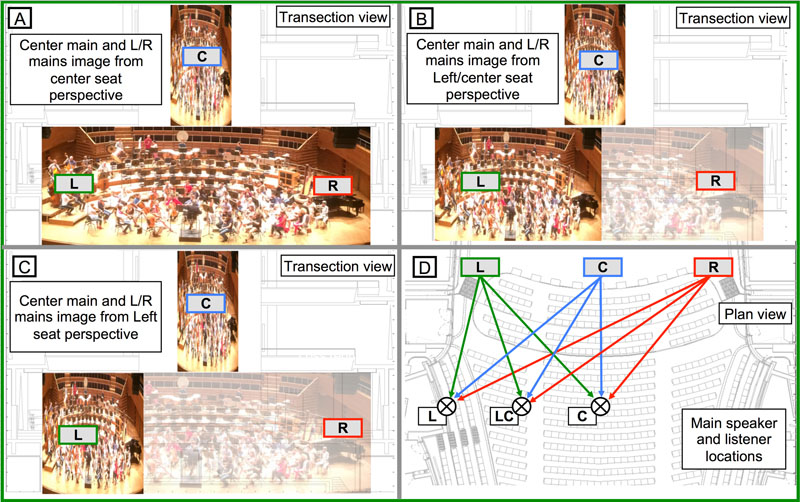
Even if the sound is clearly localizable to one side, the image is stretched with some ambiguity by the arrival from the other side (the very same thing that degrades the intelligibility). This is true of left/right systems even if the mix is 100 percent mono. Two spread sources do not sound like a single concentrated one, even in the exact center of the room.
So now we face triage. Do we allocate all resources to intelligibility and go with a center cluster? Only if we know for certain that the only application for the system is voice. If the hall can be used for other things, then left/right is the way to go.
Question 2: How about left, center and right? Vocals can go to center and left/right can carry the music. We must re-apply our principles again. We just added the need for more loudspeakers, rigging, wiring, and processing. The triage perspective reveals fixed resources that we must stretch or shrink (for a given budget).
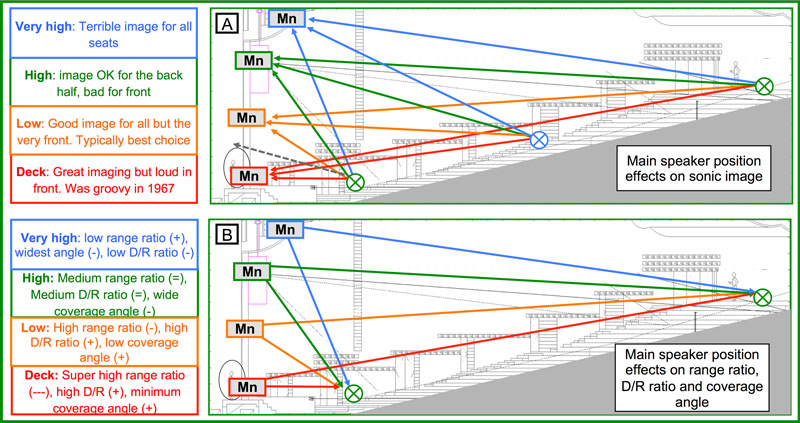
The operation of an L/C/R system presents a tradeoff between capabilities and ease of operation. The mix happens in the air as much as it does in the console, which means that a lot of time must be spent walking around to figure out how it is coming together. An L/C/R system works well for doing the same show over and over, such as in musical theater.
But the approach is a huge waste for a road house that brings in visiting engineers for a single night, who don’t have time to sort out such uncertainty. They live in a left/right world and will either not use the center (wasted resources) or sum left and right into the center (TANSTAAFL says that the added loudspeakers cost combing and intelligibility).
Question 3: High mains or low mains? No, this is not about a choice on a Chinese restaurant menu. We’ve got L/R mains and we have discretion about how high to go.
There are a lot of factors involved, and each nets individual tradeoffs that factor into the composite decision. Let’s start with sound image. Assuming actors on the ground, we have an easy one: the higher the mains, the worse the image.
The quest for minimum level variance favors moving up. A ground stack is the most extreme example. It’s going to be loud in front no matter how directional the system might be.
Raising the mains gets them further away from the front seats, which makes it easier to keep a consistent level from front to back. Take this to an extreme and you may be able to make the front and back around the same distance, but TANSTAAFL tells us the costs: image distortion and loss of direct/reverberant ratio. The higher we go, the further we have to travel to get to the listeners.
We can look at this from another perspective: coverage angle. Raising the mains changes the orientation of the loudspeakers to the two critical vertical coverage markers: vertical top and bottom. Raising them will gradually move the aim angle at the top but can greatly expand the coverage needed at the bottom.
Adding angular coverage brings up a triage perspective for the limited quantity of boxes available. Moving the loudspeakers up requires more boxes, or for us to spread the existing resources out more. TANSTAAFL tells us that spreading the loudspeakers costs us SPL.
So keeping the loudspeakers low costs us level and spectral uniformity, but is a plus in image, SPL and direct/reverberant ratio. Raising them maximizes uniformity but trades down image, SPL and D/R ratio. Finding the balance point between all of these is a centerpiece of the design process.
Question 4: Bigger boxes/smaller quantity or smaller boxes/bigger quantity? The modern main system array loudspeaker has very tight vertical coverage in its high frequency range. We shape arrays by varying the splay angle between a set of similar boxes. Each box has its limits, beyond which there are gaps in coverage. As a general rule, bigger and higher power elements have smaller angular limits than their smaller brothers and sisters.
Let’s start with three hypothetical boxes: a big box with 5-degree maximum splay, a medium box with 10-degree maximum splay, and a small box with 15-degree maximum splay. If we need 60 degrees of vertical coverage, then we need at least 12 big elements (12 x 5 degrees), or six medium elements (6 x 10 degrees), or four small elements (4 x 15 degrees).
TANSTAAFL shows that we lose power as we simultaneously reduce element capability and quantity. We can also do the job with 12 elements of any size at 5 degrees. Combined power scale is now proportional to the box cost: big-medium to small.
The triage perspective shows how we could allocate the same amount of monetary resources to cover this: six medium-sized boxes at 10 degrees or 12 smaller boxes at 5 degrees. The SPL (and cost) could wind up the same, as the smaller boxes use more overlap to compensate for their smaller individual capabilities.
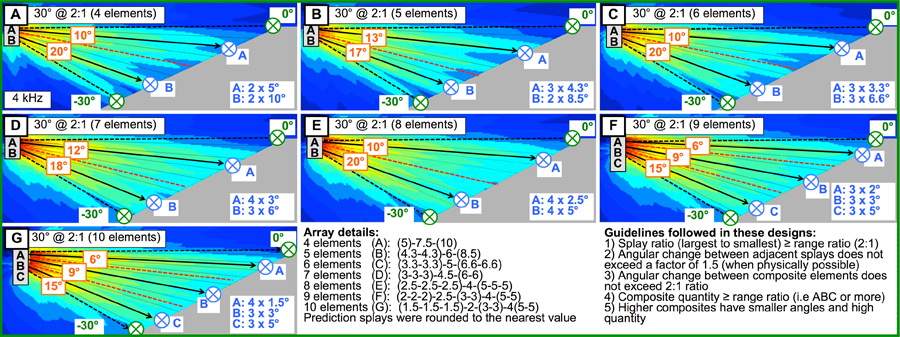
The above scenarios fail to consider the ramifications of some seats being farther away than others. In the vertical plane we can expect that the upper seats are far and the lowest seats are near. The difference between these is termed the range ratio. We compensate for the range ratio by creating more angular overlap in the upper boxes and less in the lowers. At a minimum we should expect to see the splay ratio (the widest to the narrowest) approach the range ratio.
Therefore if we faced a 2:1 range ratio, we might see 10 degrees at the bottom and 5 degrees at the top. This means we need more than six of the medium boxes to cover 60 degrees at a 2:1 range ratio (recall that we cannot splay them past 10 degrees). We’ll need around 1.5x the previous number (nine boxes). This is where TANSTAAFL comes in – unless there is extra money to buy more boxes, we’ll need a larger quantity of smaller ones.
The higher the range ratio, the higher the quantity required to fill a given angle. A 30-degree coverage area at 1:1 can use six big, medium or small loudspeakers (at 5-degree splay). We need more than six big boxes if the range ratio rises to 2:1, but we could still use six boxes of the medium and small ones. If the ratio rises further, the need for quantity rises still more (since the splay ratio must increase proportionally.)
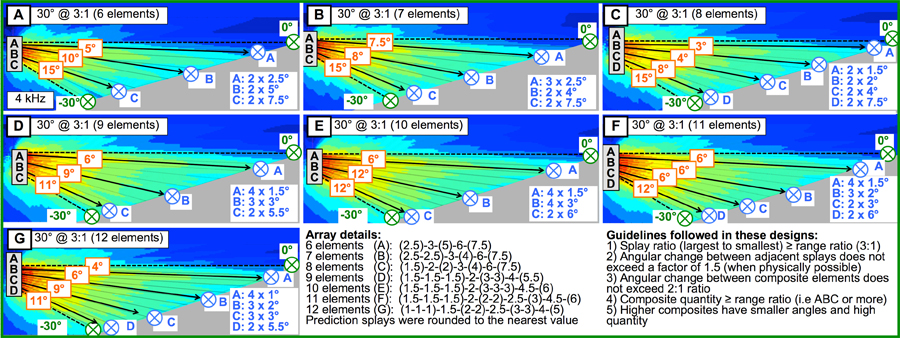
If we face a small angle and low range ratio, we should use the biggest box the budget will allow. As angle and range ratio rise, the tradeoff shifts in favor of larger quantities of smaller boxes.
This process – or tradeoff evaluation – can go on forever. I maxed out this article and never even got to the questions of when to split the mains into upper and lower, or how to aim the mains in the horizontal plane. I also didn’t get to whether to fly the subwoofers, make them cardioid, or whether center subs would be better than left/right.
And then there are still more tradeoffs ahead when we consider the fills, delays and more. Nevertheless, we can face these tradeoffs with the same guiding principals: the giving and getting of TANSTAAFL and the resource allocation prioritization of triage.

